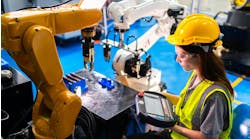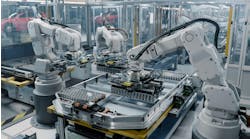Mike Bacidore is the editor in chief for Control Design magazine. He is an award-winning columnist, earning a Gold Regional Award and a Silver National Award from the American Society of Business Publication Editors. Email him at [email protected].
When were you born? Have you ever looked up the date to see what the world was like when you arrived? I’m sure it’s just a coincidence, but, on the day I was born, the United States conducted the largest man-made nuclear test in outer space (code name: Starfish Prime).
This year, Control Design turns 20 years old. When Paul Studebaker and Joe Feeley, two of its first editors, introduced the publication to machine builders 20 years ago, the manufacturing world was a very different place. Potential Y2K problems in PLC logic were looming on the horizon. OEMs were complaining about the new headaches caused by the CE mark. Machine builders were facing a set of automation issues that were specific to the time. In fact, during Control Design’s first year, the topic of robots came up only once, and that was in an article on how to recondition and upgrade old robots.
A lot has happened since Control Design’s 1997 debut. Feeley has retired, and Studebaker is now chief editor of Control magazine. The lot of robots has changed, as well. The robot renaissance has been fueled by improved vision and sensing technologies, not to mention their ease of programming and affordability.
The Industrial Internet of Things further impacts how they’re used and the data they can provide. Plus, the end-effector market has seen strong growth due to the remarkable number of application possibilities it can provide. Robots have become so accessible and functional that they’re almost like components capable of being integrated easily.
But that’s not even the half of it. The biggest advancement has been with collaborative robots that can work side-by-side with humans to do tasks such as operating hand tools, painting, doing lab work, soldering, screwing, gluing and conducting other types of assembly.
The Robotic Industries Association (RIA) continues to help in refining the standards for robots’ force-limiting functions and speed monitoring, which allow them to safely interact with humans in industrial environments. Pat Davison recently left his position as director of standards development at RIA, and Carole Franklin has filled it, providing what should be a seamless transition. While Davison has steered RIA standards down the right path, Franklin is sure to find herself addressing new twists and turns in the road created by the expanding use of collaborative robots.
Since Jan. 1, 1997, only 25 robot-related safety accidents have occurred, and fewer than 20 of those resulted in human death. While a single death is one too many, the number of fatalities caused by robots during the entire existence of Control Design pales in comparison to the 4,679 workers killed on the job in 2014 alone.
I’m confident Franklin and RIA will continue to improve the safety of robots, especially in this new era of collaborative efforts. Here’s to 20 more years of Control Design and the new technological advancements in machine building and safety that keep our industry moving forward.
Homepage image courtesy of Stuart Miles at FreeDigitalPhotos.net




